When Trauma Is Not a Single Event
For many, the word “trauma” conjures images of a single, devastating event: a car accident, a natural disaster, a combat experience. While these are undoubtedly traumatic, there is another form of suffering, one that is often less visible but profoundly damaging. It is the trauma that unfolds not in a single moment, but over months, years, or even a lifetime. This is the trauma of being trapped in a situation of ongoing abuse, neglect, or captivity, where the threat is not an isolated incident but a constant condition of one’s existence. The wounds from this type of experience are deep and multifaceted, affecting not only one’s sense of safety in the world but also one’s very sense of self.
To account for this distinct clinical picture, the field of mental health has recognized a condition known as Complex Post-Traumatic Stress Disorder (C-PTSD). Formally included in the World Health Organization’s 11th Revision of the International Classification of Diseases (ICD-11), C-PTSD provides a more accurate and compassionate framework for understanding the pervasive impact of prolonged, relational trauma. It acknowledges that when trauma is chronic and interpersonal, it does more than create fear; it fundamentally alters a person’s emotional regulation, identity, and capacity for connection.
This article serves as a comprehensive, evidence-based guide to understanding and healing from C-PTSD. It will define the condition, explore its deep-seated symptoms, differentiate it from related disorders, and offer a tool for self-reflection. Most importantly, it will illuminate the evidence-based pathways toward recovery, offering a roadmap from a state of surviving to one of thriving.
Understanding the Landscape of Complex Trauma
To navigate the path to healing, one must first understand the terrain. This section establishes the foundational knowledge of C-PTSD, defining what it is, what causes it, and how it differs from other trauma-related conditions.
What is Complex PTSD? The Nature of the Wound
Complex PTSD is a clinical disorder that can develop following exposure to an event or series of events of an extremely threatening or horrific nature, most commonly prolonged or repetitive events from which escape is difficult or impossible. According to the ICD-11, the diagnosis is characterized by the three core symptom clusters of Post-Traumatic Stress Disorder (PTSD) plus three additional clusters of symptoms known as Disturbances in Self-Organization (DSO).
The causes of C-PTSD are distinct from those of single-event PTSD. They are rooted in chronic and often relational trauma, including :
- Prolonged childhood abuse (emotional, physical, sexual) or severe neglect
- Long-term domestic violence
- Torture, kidnapping, or slavery
- Forced prostitution or sex trafficking
- Being a prisoner of war or living in a war zone for an extended period
Several factors increase the likelihood of developing C-PTSD. The risk is significantly heightened if the trauma occurred at a young age, lasted for a long time, was perpetrated by a caregiver or trusted figure, and if escape or rescue was unlikely. This element of interpersonal betrayal is not merely an aggravating factor; it is often the central mechanism of the injury. When a source of safety, such as a parent, becomes a source of danger, it creates a profound psychological paradox for the developing child. The attachment system, biologically wired to seek protection, is activated by the very person causing the terror. To survive this impossible situation, the mind must resort to profound coping mechanisms, such as dissociating from the experience or internalizing the blame (“It must be my fault”). These survival strategies, while necessary in the moment, become the deeply ingrained patterns that manifest as the core symptoms of C-PTSD in adulthood.
C-PTSD vs. PTSD: The Critical Distinctions
While C-PTSD includes all the symptoms of PTSD, it is a more expansive diagnosis that captures a broader range of difficulties. The primary distinction lies in the nature of the trauma and the resulting breadth of symptoms.
- Nature of Trauma: PTSD can arise from a single, terrifying event of limited duration. C-PTSD, by definition, stems from prolonged, repeated trauma, often of an interpersonal nature.
- Symptom Breadth: PTSD is fundamentally a disorder of memory and fear response, characterized by re-experiencing, avoidance, and hyperarousal. C-PTSD encompasses these symptoms but adds the pervasive Disturbances in Self-Organization, making it a disorder that also profoundly affects identity, emotional control, and the ability to form relationships. This distinction is vital for treatment, as standard PTSD protocols may be insufficient for individuals with C-PTSD, who often require more long-term, intensive, and phased support to address these deeper wounds to the self.
Untangling the Knot: C-PTSD and Borderline Personality Disorder (BPD)
A significant challenge in the clinical world is the symptomatic overlap between C-PTSD and Borderline Personality Disorder (BPD), which can lead to misdiagnosis. Both conditions can involve emotional instability, difficulties in relationships, and a disturbed sense of self, and both are strongly associated with histories of childhood trauma. This can be deeply invalidating for a survivor who is told they have a “personality disorder” when their symptoms are, in fact, a direct and understandable result of prolonged trauma.
However, key differentiators exist. The core driver in BPD is often understood as a frantic fear of abandonment, leading to a pattern of unstable relationships. In C-PTSD, the core driver is more centrally a pervasive and stable negative self-concept—a deep-seated sense of being worthless, damaged, and contaminated by the trauma—along with a persistent sense of threat. While both may struggle with relationships, the underlying reason differs. For C-PTSD, it is often a profound distrust of others rooted in betrayal trauma; for BPD, it is more about a volatile pattern of idealization and devaluation driven by fears of being left alone.
The following table provides a concise comparison of these often-confused conditions.
The Core Wounds of C-PTSD: Symptoms and Experiences
The symptoms of C-PTSD are layered. They begin with the foundational reactions seen in PTSD and build upon them with a triad of difficulties that reflect the deep impact of chronic trauma on the developing self.
The Foundation: Shared Symptoms with PTSD
A diagnosis of C-PTSD requires that the core criteria for PTSD are met. These include :
- Re-experiencing the Trauma: This involves the trauma intruding into the present moment. It can manifest as distressing and involuntary memories, nightmares, or vivid flashbacks where it feels as if the event is happening again.
- Avoidance: This is the persistent effort to avoid anything that serves as a reminder of the trauma. This includes avoiding internal experiences like thoughts and feelings, as well as external reminders like people, places, activities, or conversations.
- Persistent Sense of Current Threat (Hyperarousal): This reflects the nervous system being stuck in a state of high alert. Symptoms include hypervigilance (constantly scanning for danger), an exaggerated startle response, irritability, difficulty concentrating, and sleep disturbances. The body and mind continue to operate as if the danger is still present, even when in a safe environment.
The “Complex” Triad: Disturbances in Self-Organization (DSO)
This triad of symptoms is what defines C-PTSD and distinguishes it from single-event PTSD. These are not just additional problems; they are pervasive, deeply rooted patterns that affect every aspect of a person’s life.
A. Emotional Turmoil (Affective Dysregulation)
This is a severe and persistent difficulty in managing emotions that goes far beyond the irritability of PTSD. Survivors may experience :
- Heightened Emotional Reactivity: Small stressors can trigger overwhelming emotional responses, such as explosive anger or profound sadness.
- Emotional Numbing: Conversely, some may experience an inability to feel positive emotions or pleasure, living in a state of emotional shutdown or detachment.
- Emotional Flashbacks: This is a key feature of C-PTSD. An emotional flashback is a sudden and overwhelming regression to the feeling state of the original trauma—such as intense terror, shame, helplessness, or despair—without the accompanying visual or sensory memory. The individual is flooded with these powerful emotions and may react to the present situation as if it is the cause, unaware that they are re-experiencing the past.
- Maladaptive Coping: Because many survivors of complex trauma did not have a caregiver to help them learn to regulate their emotions, they may turn to self-destructive behaviors in adulthood to manage the internal turmoil, such as substance misuse, self-harm, disordered eating, or other impulsive acts.
The Fractured Self (Negative Self-Concept)
Perhaps the most painful and defining feature of C-PTSD is a deeply disturbed self-perception. This involves persistent, pervasive beliefs about oneself as being diminished, defeated, or worthless.
- Pervasive Shame and Guilt: Survivors often carry a profound sense of shame and guilt related to the trauma. They may blame themselves for the abuse, believing they are inherently flawed, unlovable, or “bad,” a belief that was often a necessary psychological adaptation to survive an abusive environment controlled by a caregiver.
- Feeling Damaged and Different: There is often a sense of being permanently damaged or “contaminated” by the trauma, leading to feelings of being completely different from other people. This can manifest as an inability to accept praise, a relentless inner critic, and a deep-seated feeling of inadequacy. While someone with PTSD may feel “not myself” since the trauma, a person with C-PTSD may feel they have no coherent self at all.
The Challenge of Connection (Disturbances in Relationships)
Given that complex trauma is often relational, it inevitably causes profound difficulties in forming and maintaining connections with others.
- The Trust Barrier: The experience of betrayal by trusted figures creates a fundamental difficulty with trust in adulthood. The world is often perceived as a dangerous place, and others are seen as potentially untrustworthy.
- Avoidance and Isolation: Many survivors consistently avoid relationships and social engagement to protect themselves from the perceived risk of being hurt again. They may feel distant or cut off from others, even when they desire connection.
- Unstable Relational Patterns: For some, the struggle manifests as a pattern of entering intense but chaotic and unsustainable relationships. These relationships may unconsciously replicate the dynamics of the original trauma, leading to a cycle of revictimization. The fear of vulnerability and intimacy can make it nearly impossible to feel safe and secure with another person.
These three domains of disturbance do not operate in isolation. They form a powerful, self-perpetuating negative feedback loop. For example, an emotional flashback (Affective Dysregulation) can lead to an angry outburst that damages a relationship (Disturbances in Relationships). This relational rupture then reinforces the deep-seated belief of being a failure and unlovable (Negative Self-Concept), which in turn fuels more intense feelings of shame and emotional dysregulation, starting the cycle anew. This interconnectedness explains why C-PTSD can feel so intractable and why effective treatment must address all three components of this triad, rather than focusing on just one symptom in isolation.
An Informal Screener for Complex PTSD
A Tool for Self-Reflection, Not Diagnosis
The following screener is an educational tool designed to help individuals explore whether their personal experiences align with the common symptoms of Complex PTSD discussed in this article. It is NOT a diagnostic instrument and cannot replace a comprehensive evaluation conducted by a qualified mental health professional.
The purpose of this screener is to promote self-awareness and provide a structured way to reflect on your experiences. If you find that you resonate with many of the statements, it may indicate that seeking a formal assessment from a trauma-informed therapist could be a valuable and supportive next step on your journey.
The 30-Question C-PTSD Screener
Instructions: Please read each statement carefully. Thinking about your experiences over the past month, please rate how much you have been bothered by each item on the following scale:
- 0 = Not at all
- 1 = A little bit
- 2 = Moderately
- 3 = Quite a bit
- 4 = Extremely
Section 1: Re-experiencing in the Here and Now
- Having repeated, disturbing, and unwanted memories of stressful past experiences?
- Having repeated, disturbing dreams related to those experiences?
- Suddenly feeling or acting as if a stressful experience were happening all over again (flashbacks)?
- Feeling very emotionally upset when something reminded you of a stressful experience?
- Having strong physical reactions (e.g., heart pounding, trouble breathing, sweating) when reminded of a stressful experience?
Section 2: Avoidance
- Avoiding memories, thoughts, or feelings related to stressful experiences?
- Avoiding external reminders of stressful experiences (e.g., people, places, conversations, or situations)?
- Feeling unable to remember important parts of a stressful experience?
- Feeling emotionally numb or unable to have strong feelings?
- Losing interest in activities you used to enjoy?
Section 3: Sense of Current Threat
- Being “super-alert,” watchful, or on guard?
- Feeling jumpy or being easily startled?
- Having difficulty concentrating?
- Having trouble falling or staying asleep?
- Feeling irritable or having angry outbursts?
Section 4: Affective Dysregulation (Emotional Turmoil)
- When you get upset, does it feel overwhelming and take you a very long time to calm down?
- Experiencing sudden and intense shifts in your emotions that feel out of your control?
- Feeling emotionally shut down or detached from your feelings?
- Engaging in self-destructive behaviors (e.g., substance use, self-harm, reckless actions) to cope with painful emotions?
- Having trouble experiencing positive feelings like happiness, joy, or love?
Section 5: Negative Self-Concept (Fractured Self)
- Carrying persistent feelings of guilt or blaming yourself for the stressful experiences or their consequences?
- Believing that you are worthless, a failure, or fundamentally “bad”?
- Feeling deep and persistent shame about yourself or what happened to you?
- Feeling as if you are permanently damaged or different from other people?
- Finding it difficult to accept compliments or believe positive things about yourself?
Section 6: Disturbances in Relationships (Challenge of Connection)
- Finding it difficult to feel emotionally close to or trust other people?
- Feeling distant or cut off from people, even when you are with them?
- Avoiding friendships and intimate relationships, or finding them very difficult to maintain?
- Finding yourself in a pattern of intense or chaotic relationships?
- Feeling lonely, misunderstood, or like nobody can understand what you went through?
Reflecting on Your Responses
Take a moment to look over your responses. There is no specific “score” that equals a diagnosis. This is simply a mirror for your experiences.
If you found yourself rating many items, particularly in Sections 4, 5, and 6, with scores of 2 (Moderately) or higher, your struggles may align with the clinical picture of C-PTSD. This does not mean you are broken or flawed; it means you have likely endured overwhelming experiences and are living with the understandable consequences.
Please know that you are not alone, and these responses are not a life sentence. They are signals from your mind and body indicating that there are wounds that need care. Recognizing these patterns is the first, most courageous step toward healing. This may be a sign that speaking with a trauma-informed therapist could provide the support and guidance you deserve.
Pathways to Healing and Reclamation
While the impact of complex trauma is profound, recovery is absolutely possible. Healing from C-PTSD is not about erasing the past, but about integrating it in a way that it no longer controls the present. Treatment is a process of reclaiming your life, your sense of self, and your capacity for connection.
The Phased Approach to C-PTSD Treatment
Effective treatment for C-PTSD is typically conducted in phases, a model first proposed by trauma expert Dr. Judith Herman. Unlike some therapies that might immediately dive into processing traumatic memories, the first and most critical phase for C-PTSD is establishing safety and stability. This involves:
- Phase 1: Safety and Stabilization: The primary goal is to help the individual regain a sense of control over their body, emotions, and life. This phase focuses on developing skills for emotional regulation, managing distressing symptoms, building a strong therapeutic alliance, and ensuring physical and emotional safety in the present.
- Phase 2: Remembrance and Mourning (Trauma Processing): Once a foundation of stability is established, the individual can begin to process the traumatic memories. This is done in a safe, controlled therapeutic environment, allowing the survivor to integrate the memories without being overwhelmed by them.
- Phase 3: Reconnection: The final phase focuses on creating a new sense of self and a new future. This involves building healthy relationships, engaging in meaningful life activities, and moving from a survivor identity to one of thriving.
Evidence-Based Psychotherapies
Several therapeutic modalities have been shown to be effective for treating trauma-related disorders. For C-PTSD, a combination of approaches is often most beneficial.
- Trauma-Focused Cognitive Behavioral Therapy (TF-CBT): This is a highly effective, evidence-based approach that helps individuals change unhelpful patterns of thinking and behavior related to the trauma. It involves psychoeducation about trauma, learning coping skills for relaxation and emotional regulation, and then gradually and safely engaging with traumatic memories (exposure) to reduce their emotional power.
- Eye Movement Desensitization and Reprocessing (EMDR): EMDR is a structured therapy that helps the brain reprocess traumatic memories. During sessions, the client briefly focuses on a traumatic memory while engaging in bilateral stimulation (such as guided eye movements). This process appears to help “unstick” the memory, allowing it to be stored in a way that is no longer distressing or intrusive.
- Cognitive Processing Therapy (CPT): CPT is a specific type of CBT that focuses on identifying and challenging “stuck points”—unhelpful beliefs that have developed as a result of the trauma. These often relate to themes of safety, trust, power, esteem, and intimacy. By examining and modifying these beliefs, individuals can create a new understanding of the trauma and its impact on their lives.
- Dialectical Behavior Therapy (DBT): While not designed as a trauma-processing therapy, DBT is exceptionally effective for the affective dysregulation component of C-PTSD. It provides concrete skills in four key areas: mindfulness, distress tolerance, emotion regulation, and interpersonal effectiveness. For many with C-PTSD, a course of DBT is a critical part of the initial stabilization phase, providing the tools needed to manage overwhelming emotions before processing trauma directly.
- Somatic and Body-Based Therapies: Recognizing that trauma is stored in the body as much as in the mind, body-based therapies like Somatic Experiencing and Sensorimotor Psychotherapy are gaining evidence. These approaches focus on helping individuals process trauma by attending to physical sensations and releasing trapped survival energy from the nervous system, thereby restoring a sense of regulation and safety within the body.
The Role of Medicatio
There is no medication that can “cure” C-PTSD. Psychotherapy remains the primary and most effective treatment. However, medication can be a valuable adjunctive tool to help manage debilitating symptoms, thereby making it possible for an individual to fully engage in and benefit from therapy.
Medications, typically prescribed by a psychiatrist, may include :
- Antidepressants: Selective Serotonin Reuptake Inhibitors (SSRIs) such as sertraline (Zoloft) and paroxetine (Paxil) are FDA-approved for PTSD and can help reduce symptoms of depression, anxiety, emotional reactivity, and intrusive thoughts.
- Anti-Anxiety Medications: These may be used on a short-term basis to manage severe anxiety or panic, but they are generally not recommended for long-term use due to the potential for dependence.
From Surviving to Thriving
Complex PTSD is a profound and painful wound, born from experiences that no person should have to endure. It is a testament to the resilience of the human spirit that one can survive such prolonged adversity. The symptoms—the emotional turmoil, the fractured sense of self, the struggle to connect—are not signs of weakness or defect; they are the logical, deeply ingrained adaptations that were necessary for survival.
Understanding the nature of this wound is the first step toward healing it. While the echoes of trauma can be long and loud, they do not have to dictate the future. C-PTSD is a treatable condition. Through evidence-based, trauma-informed therapy, it is possible to regulate the nervous system, challenge the painful beliefs born from trauma, and learn to build the safe, trusting connections that were once unimaginable. Healing is a journey of reclamation—of safety, of self, and of a life filled with meaning and hope. If this article has resonated with you, let it be a sign that your journey can begin today.
Resources and Further Reading
Crisis Lines and Immediate Support:
- Veterans Crisis Line: Call 988 and select 1, or text 838255.
- National Suicide Prevention Lifeline: Call or text 988.
Professional Organizations and Information:
- National Center for PTSD: A leading research and educational center on trauma and PTSD. (www.ptsd.va.gov)
- International Society for Traumatic Stress Studies (ISTSS): An international organization for professionals who study and treat trauma. (www.istss.org)
- The Trauma Research Foundation: Founded by Dr. Bessel van der Kolk, dedicated to research and innovation in trauma treatment. (www.traumaresearchfoundation.org)
Peer Support Communities (for connection, not professional advice):
- CPTSD Subreddit: r/CPTSD
- CPTSD Foundation: (www.cptsdfoundation.org)
Seminal Literature:
- The Body Keeps the Score: Brain, Mind, and Body in the Healing of Trauma by Bessel van der Kolk, M.D.
- Trauma and Recovery: The Aftermath of Violence—from Domestic Abuse to Political Terror by Judith Herman, M.D.
- Complex PTSD: From Surviving to Thriving by Pete Walker, M.A., MFT.
References
Of course. Here is the list of references from the article, organized and with their corresponding links.
- American Psychological Association. (n.d.). Treatments for PTSD. https://www.apa.org/ptsd-guideline/treatments
- Autonomy Therapy. (n.d.). What is Complex PTSD? https://autonomytherapyatx.com/blog-austin-tx/what-is-complex-ptsd
- Bleich, A., et al. (2010). Interpersonal factors in the development of PTSD. CNS Spectrums. https://pmc.ncbi.nlm.nih.gov/articles/PMC2852131/
- Cleveland Clinic. (2023). CPTSD (Complex PTSD). https://my.clevelandclinic.org/health/diseases/24881-cptsd-complex-ptsd
- Compassion Behavioral Health. (n.d.). Complex PTSD and Relationships. https://compassionbehavioralhealth.com/complex-ptsd-and-relationships/
- Crappy Childhood Fairy. (2022). 12 Must-Know Signs of Complex PTSD. https://crappychildhoodfairy.com/2022/11/02/12-must-know-signs-of-complex-ptsd/
- D’Amore Mental Health. (n.d.). Complex PTSD Test. https://damorementalhealth.com/resources/complex-ptsd-test/
- Dr. Oracle AI. (n.d.). Describe relationship issues with Complex PTSD. https://www.droracle.ai/articles/221178/describe-relationship-issues-with-complex-ptsd
- Emily Wu, MD. (n.d.). Understanding Complex Trauma: How It Impacts Your Emotional Health and Self-Perception. https://emilywumd.com/understanding-complex-trauma-how-it-impacts-your-emotional-health-and-self-perception/
- Karatzias, T., et al. (2018). Complex posttraumatic stress disorder: A new diagnosis in ICD-11. Psychiatry and Clinical Neurosciences. https://pmc.ncbi.nlm.nih.gov/articles/PMC5862650/
- Mayo Clinic. (n.d.). Post-traumatic stress disorder (PTSD): Diagnosis & treatment. https://www.mayoclinic.org/diseases-conditions/post-traumatic-stress-disorder/diagnosis-treatment/drc-20355973
- Medical News Today. (2023). What to know about complex PTSD triggers in relationships. https://www.medicalnewstoday.com/articles/complex-ptsd-triggers-in-relationships
- Mind. (n.d.). Complex PTSD. https://www.mind.org.uk/information-support/types-of-mental-health-problems/post-traumatic-stress-disorder-ptsd-and-complex-ptsd/complex-ptsd/
- Mind. (n.d.). Treatment for PTSD. https://www.mind.org.uk/information-support/types-of-mental-health-problems/post-traumatic-stress-disorder-ptsd-and-complex-ptsd/treatment/
- Munster Behavioral Health. (n.d.). What Are the 17 Symptoms of Complex PTSD? https://munsterbehavioralhealth.com/what-are-the-17-symptoms-of-complex-ptsd/
- NAMI Massachusetts. (2024). Trauma. https://namimass.org/trauma/
- NHS. (n.d.). Complex post-traumatic stress disorder (complex PTSD). https://www.nhs.uk/mental-health/conditions/post-traumatic-stress-disorder-ptsd/complex/
- NHS. (n.d.). Treatment – Post-traumatic stress disorder (PTSD). https://www.nhs.uk/mental-health/conditions/post-traumatic-stress-disorder-ptsd/treatment/
- NovoPsych. (n.d.). International Trauma Questionnaire (ITQ). https://novopsych.com/assessments/diagnosis/international-trauma-questionnaire-itq/
- Psych Central. (n.d.). Affect Dysregulation and C-PTSD. https://psychcentral.com/ptsd/affect-dysregulation-and-c-ptsd
- Psych Central. (n.d.). How Does Complex PTSD (CPTSD) Affect Interpersonal Relationships? https://psychcentral.com/ptsd/c-ptsd-and-interpersonal-relationships
- PTSD UK. (n.d.). PTSD and C-PTSD: The similarities and the differences. https://www.ptsduk.org/ptsd-and-c-ptsd-the-similarities-and-the-differences/
- Substance Abuse and Mental Health Services Administration. (2014). Trauma-Informed Care in Behavioral Health Services. https://library.samhsa.gov/product/tip-57-trauma-informed-care-behavioral-health-services/sma14-4816
- traumadissociation.com. (n.d.). Complex PTSD. https://traumadissociation.com/complexptsd
- Traumatic Stress Wales. (n.d.). The International Trauma Questionnaire (ITQ). https://traumaticstress.nhs.wales/workstreams/data-set-downloads/itq-english/
- U.S. Department of Veterans Affairs. (n.d.). Complex PTSD. https://www.ptsd.va.gov/professional/treat/essentials/complex_ptsd.asp
- U.S. Department of Veterans Affairs. (n.d.). International Trauma Questionnaire (ITQ). https://www.ptsd.va.gov/professional/assessment/adult-sr/itq.asp
- U.S. Department of Veterans Affairs. (n.d.). Overview of Psychotherapy for PTSD. https://www.ptsd.va.gov/professional/treat/txessentials/overview_therapy.asp
- U.S. Department of Veterans Affairs. (n.d.). PTSD: National Center for PTSD Home. https://www.ptsd.va.gov/
- Valente, M., et al. (2022). Emotional dysregulation in complex post-traumatic stress disorder: A narrative review. Journal of Psychopathology. https://www.jpsychopathol.it/article/view/810
- VAWnet. (n.d.). Key Organizations. https://vawnet.org/sc/key-organizations
Disclaimer
The information provided in this article, including the informal screener, is for educational and informational purposes only. It is not intended as a substitute for professional medical advice, diagnosis, or treatment. The screener is not a formal evaluation but is offered as a way for you to gain a preliminary idea of how your experiences may align with common symptoms of Complex PTSD. A formal diagnosis can only be made by a qualified mental health professional after a comprehensive assessment. If you are struggling with your mental health, please seek help from a licensed clinician or another qualified health provider. Do not disregard professional medical advice or delay in seeking it because of something you have read in this article. If you are in crisis, please contact a crisis hotline or go to your nearest emergency room







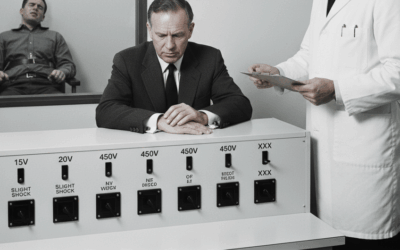
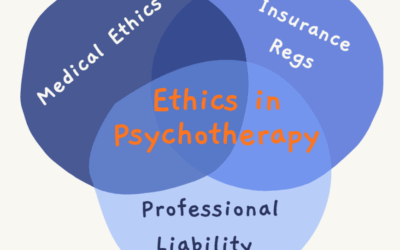
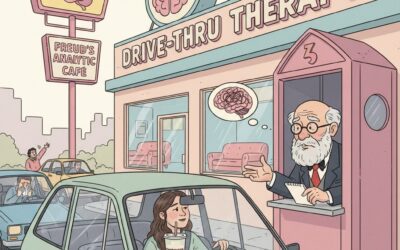



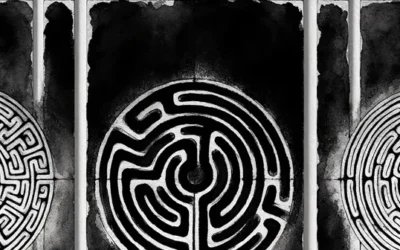








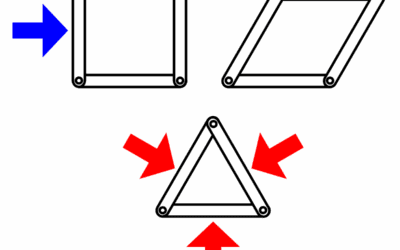

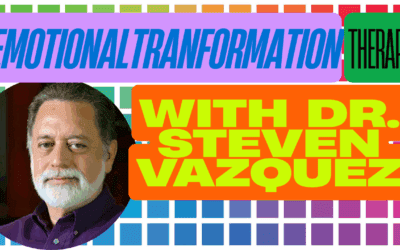
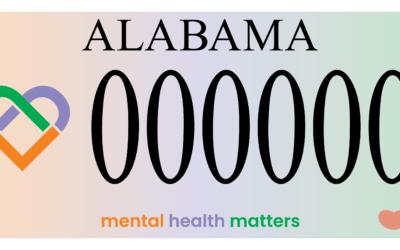

0 Comments